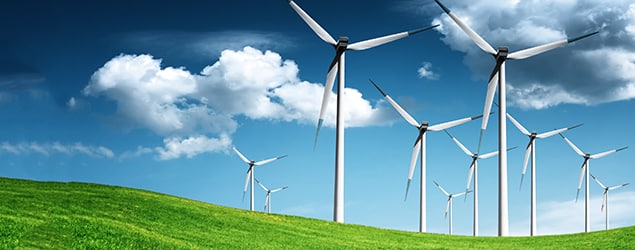Green energy: Neither free nor forever

One argument sometimes heard in favor of green energy is that sources such as wind and solar are “free, forever.” Al Gore, in particular, has said repeatedly that to end our “overdependence on outdated, heavily polluting carbon-based technologies . . . we need sources that are free forever, like the sun, wind and earth.” (See also here and here.)
On a superficial glance, this might seem to have a certain ring of plausibility. To use the energy in oil, coal and natural gas takes a lot of work and resources: the fuels have to be discovered, extracted, transported, processed, refined, and distributed—all at great effort and expense.
By contrast, sunlight and wind are flows of energy that already occur all by themselves in nature. Sunshine is, literally, a stream of electromagnetic energy flowing onto the earth. Similarly with wind, which consists of air particles that carry kinetic energy by the very fact of their being in motion. We can feel the effects of such energy without effort, just by sitting in the sun and enjoying the breeze.
But if you give this even a tiny amount of additional thought, you should quickly realize that the “free forever” argument is just plain silly.
Gore is equivocating on the word “free.” In the sense he is using it, the energy in fossil fuels is exactly as “free” as solar, wind, or geothermal energy: it exists naturally in the fuels themselves — in this case, in the form of chemical bonds storing chemical potential energy, which is released as heat when the fuel is burned.
But as practical, economical sources of power, Gore’s favored forms of energy are no more free than any other source. To utilize sunlight and wind, they have to be converted into a usable form such as electricity. And that requires expensive technology, machinery, infrastructure. It’s not like you can just put your toaster out in a breeze and expect to get toast.
Sunlight and wind are, in fact, far more expensive to exploit than fossil fuels, which is why they have never achieved any significant market penetration. (Eighty-six percent of the world’s energy comes from fossil fuels, compared to less than 2 percent from solar, wind, and geothermal combined.)
The same goes for “forever.” It’s not as though you can just set up a wind farm or solar panel and get power from those assets eternally. Like any other piece of technology, a windmill or solar apparatus will only last for a certain period—and in the meantime it’ll require an ongoing investment in cleaning, maintenance, servicing and so on.
And while it’s obviously true that fossil fuels are finite, there is no imminent concern about dwindling supplies. There’s no more reason for us to worry about running out of oil or coal than there was for our ancestors to worry about running out of candles.
“Expensive and temporary” doesn’t quite have the marketing ring of “free forever”—but it’s a lot more accurate as a description of green energy.



